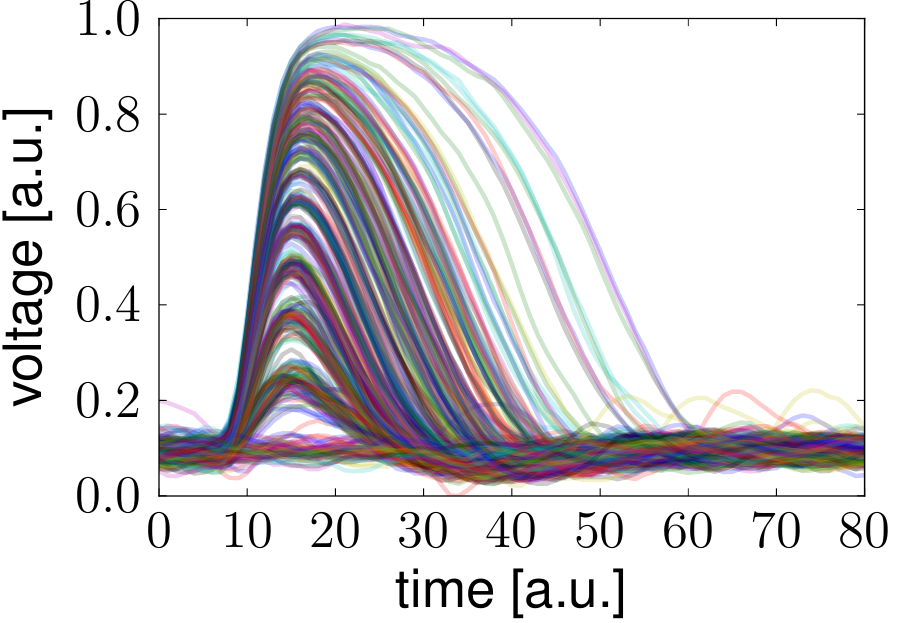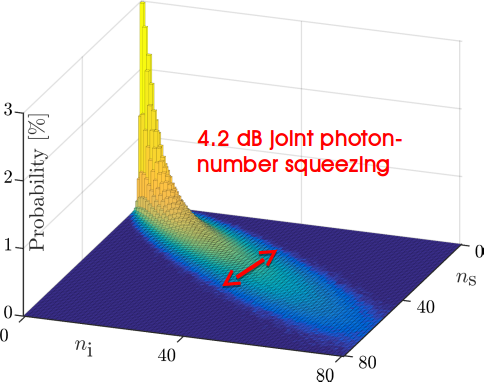The generation of macroscopic quantum states is a challenging goal throughout many fields of physics. Not only would it be fascinating to see quantum effects on a macroscopic scale, their generation is also a prerequisite if one wants to exploit quantum effects for real-world applications.
In a joint publication, recently published in Physical Review Letters*, scientists from two groups at the University of Paderborn, the IQO and the MQO, in collaboration with scientists at the National Institute of Standards and Technology (NIST) in the United States, presented their work on the generation of large optical states in well defined optical modes. They measured quantum states with 50 photons per pulse, one order of magnitude larger than previously shown.
The quantum states have been generated with the process of parametric down-conversion (PDC), an established method to generate two beams of light with strict photon-number correlations between them. That means that, ideally, photon-number measurements in both beams always show the same value, even though the photon-number distribution is broad.
In a low pump-power regime, these correlations are often used to herald single photons, since the photon-number measurement in one beam predicts the photon number in the other beam. Hereby it is often required that the photons are produced into a single spectral and spatial mode. This can be achieved by engineering the PDC process accordingly. Previously, such engineered sources have been demonstrated to produce PDC states up to a mean photon number of 2.5. Here, the authors showed that the single-mode operation can be extended to a mean photon of 20.
In the joint work, Paderborn provided its expertise on source engineering, which has been developed for several years in the IQO group, lead by Christine Silberhorn. Her PhD student Georg Harder together with Junior Professor Tim Bartley, leading the MQO group in Paderborn, built up the experiment at NIST. The collaborators at NIST, Thomas Gerrits, Sae Woo Nam and Adriana Lita provided state-of-the-art photon-number detectors, so called transition edge sensors (TES). These detectors can not only detect photons with an efficiency close to 100%, but also resolve the number of photons detected. Thus, it was possible to measure the full photon-number distribution of the states in a space of 100x100 photons and verify the photon-number correlations as well as the single-mode character of the state. Moreover, this allowed to herald nonclassical states with up to 50 photons in a single mode.
Such states can already be considered macroscopic and have the potential to push current few-photon experiments into a many-photon regime, greatly increases the dimensionality of nonclassical states and the complexity of possible experiments.
*Phys. Rev. Lett. 116, 143601 (2016)
Publication: Single-Mode Parametric-Down-Conversion States with 50 Photons as a Source for Mesoscopic Quantum Optics


